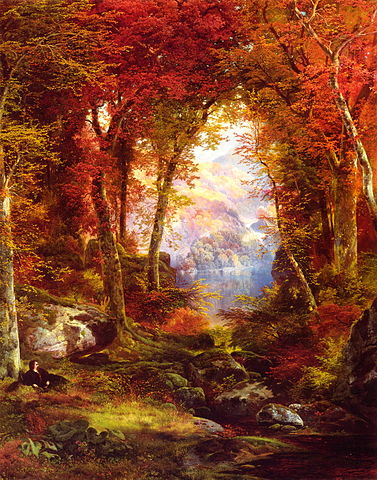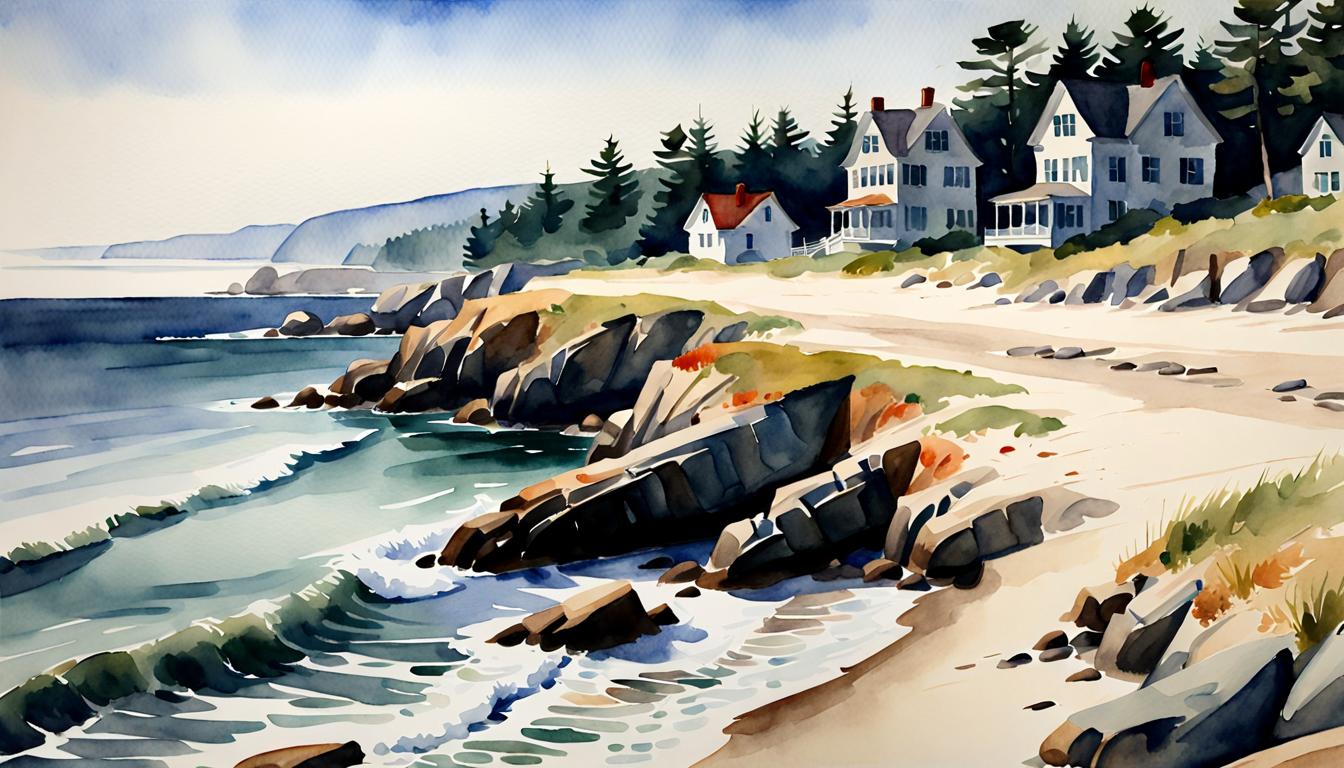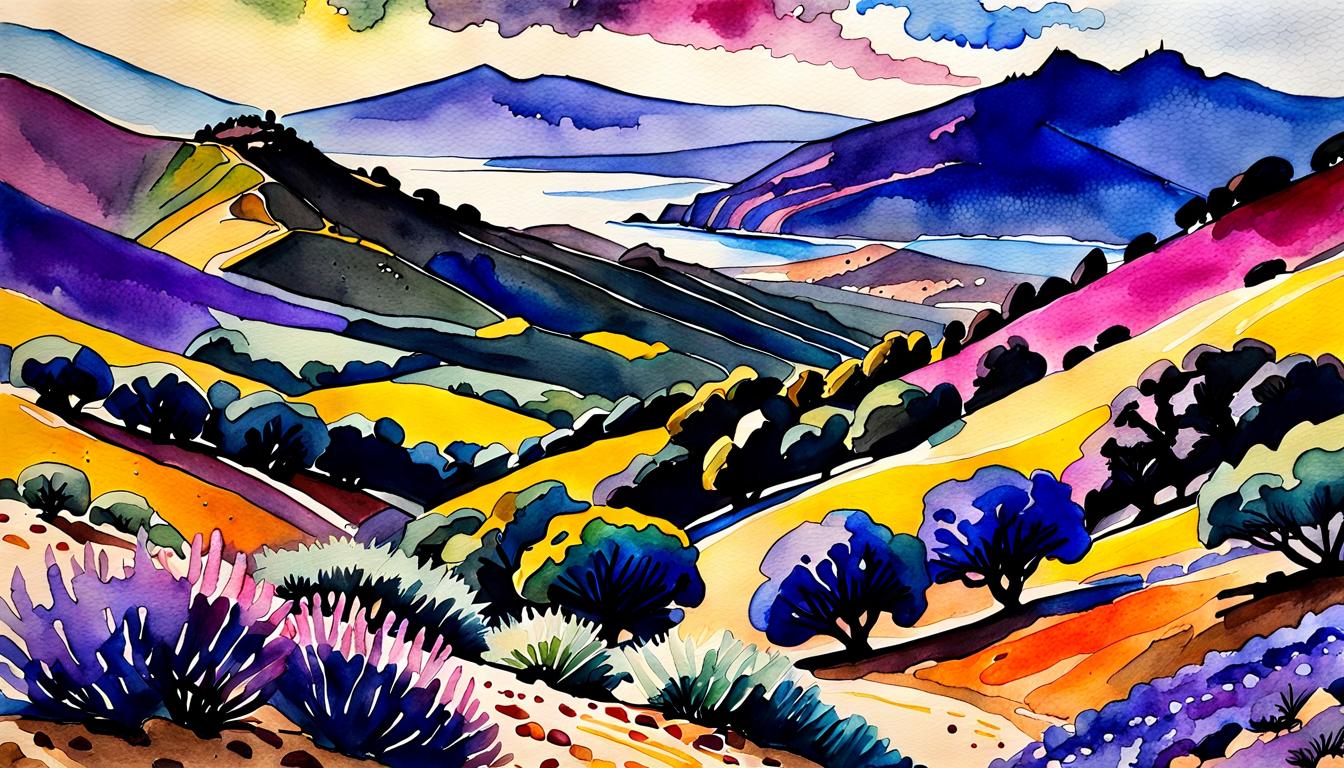Leonardo da Vinci, a name synonymous with artistic genius, left an indelible mark on the world with his unparalleled contributions to various mediums. Many of Leonardo da Vinci’s Watercolors are lost. Leonardo da Vinci’s work spans from exquisite paintings to innovative engineering designs, reflecting his insatiable curiosity and multifaceted talents. In the midst of his wide-ranging endeavors, watercolors emerged as a captivating facet of his artistry, offering a unique window into his creative mind. His use of watercolors is limited though and preservation of watercolors in the Renaissance would be problematical so it is thought many did not survive.

Painting is poetry that is seen rather than felt, and poetry is painting that is felt rather than seen.
Leonardo da Vinci
Historical Context and Renaissance Influence
The Renaissance era, characterized by a resurgence of interest in the arts and sciences, serves as the backdrop for Leonardo’s creative journey. This transformative period witnessed a flourishing of artistic expression, and Leonardo stood at its forefront. With unparalleled expertise in anatomy, engineering, and natural philosophy, Leonardo da Vinci became a symbol of Renaissance innovation. Within this dynamic atmosphere, his exploration of watercolors took root, underscoring his relentless quest for novel artistic techniques.
Diving into Watercolor’s Significance
Watercolors possess an intrinsic allure, celebrated for their translucency and delicate color palettes. Leonardo’s deliberate choice to wield watercolors showcases his artistic acumen. The medium allowed him to achieve unparalleled subtlety in depicting light and shadow, unveiling a spectrum of emotions through delicate brushstrokes. Through watercolors, Leonardo achieved an unparalleled depth of expression that enriched his artistic repertoire and advanced the boundaries of his time.
His drawings, such as the ethereal “Study of Water Flow” and the intricate “Deluge,” captivate viewers with their intricate interplay of hues. As Leonardo ventured beyond the conventional, his watercolors illuminate the intimate relationship between art and science that defined his oeuvre. These works, often accompanied by meticulous notes, bridge the gap between artistic creation and scientific observation.
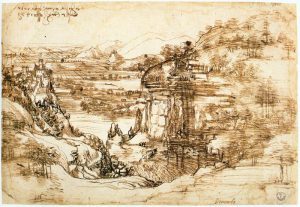
Leonardo’s drawing of the Arno River Valley is done in pen and ink with some watercolor washes. The drawing is dated to around 1503, and it is thought to be a preliminary study for a larger painting that Leonardo never completed.
Bridging Artistry and Innovation
Leonardo’s embrace of watercolors was no mere artistic inclination; it was an embodiment of his insatiable curiosity. The medium provided him with a malleable tool to investigate the natural world, enabling him to explore the intricacies of light and color with unmatched precision. His detailed observations of water’s movement and reflections culminated in exquisite watercolor studies that remain timeless examples of his fusion of art and science.
Intriguingly, Leonardo’s watercolors offer contemporary artists and enthusiasts a lens through which to explore his methodologies. The manner in which he layered pigments and harnessed the fluidity of water provides insights into his innovative techniques, transcending the boundaries of time to enrich modern artistic practices.
Leonardo’s Watercolors
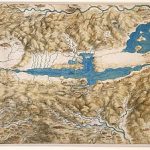
Leonardo da Vinci was a master of many different artistic mediums, including watercolor. He used watercolor to create a variety of drawings, from studies of anatomy and nature to sketches of landscapes and architectural designs. His watercolors are characterized by their delicacy, subtlety, and realism. He often used a light touch, allowing the paper to show through, which created a soft and hazy effect. He also used watercolor to create washes of color, which he used to model form and create shadows. Unfortunately, many of his watercolors have not survived.
There are some watercolor paintings that are attributed to da Vinci, but they are likely copies or forgeries. For example, a watercolor painting of the Mona Lisa is often said to be by da Vinci, but there is no evidence to support this claim. The painting is likely a copy of the original oil painting, which was created by da Vinci. Restoration of “The Last Supper” includes faded watercolors – there has been much criticism of the restoration!
Leonardo da Vinci was a master of many different artistic mediums, including watercolor. He used watercolor to create a wide variety of drawings, from studies of anatomy and nature to sketches of landscapes and architectural designs. His watercolors are characterized by their delicacy, subtlety, and realism. He often used a light touch, allowing the paper to show through, which created a soft and hazy effect. He also used watercolor to create washes of color, which he used to model form and create shadows.
Some of Leonardo’s most famous watercolor drawings include:
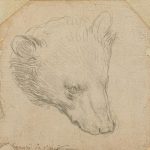
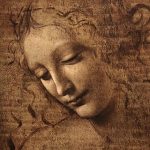
- Head of a Woman (c. 1500-10): This drawing is a study of a woman’s head, done in watercolor and black chalk. The woman’s face is shown in profile, and her hair is pulled back in a bun. The drawing is notable for its delicate use of watercolor, which creates a soft and hazy effect. The artist’s use of light and shadow is also masterful, creating a sense of depth and volume.
- Study of a Bear (c. 1490): This drawing is a study of a bear’s head, done in watercolor and pen and ink. The bear’s head is shown in a three-quarter view, and its fur is rendered in fine detail. The drawing is notable for its realistic depiction of the bear’s anatomy and fur. The artist’s use of watercolor to create the bear’s fur is particularly impressive, capturing the soft, thick texture of the animal’s coat.
- Study of a Landscape (c. 1480): This drawing is a study of a landscape, done in watercolor and pen and ink. The landscape is rendered in a sketchy style, and the colors are muted. The drawing is notable for its atmospheric effects, which create a sense of depth and space. The artist’s use of watercolor to create the hazy, atmospheric effect is particularly effective, giving the drawing a sense of mystery and wonder.
- Study of a Frog (c. 1508): This drawing is a study of a frog, done in watercolor and pen and ink. The frog is shown in profile, and its skin is rendered in fine detail. The drawing is notable for its scientific accuracy, which demonstrates Leonardo’s interest in anatomy and natural history. The artist’s use of watercolor to create the frog’s skin is particularly impressive, capturing the slimy, textured surface of the animal’s skin.
- Study of a Horse (c. 1490): This drawing is a study of a horse’s head, done in watercolor and pen and ink. The horse’s head is shown in three-quarter view, and its muscles are rendered in fine detail. The drawing is notable for its realistic depiction of the horse’s anatomy and movement. The artist’s use of watercolor to create the horse’s muscles is particularly effective, capturing the power and strength of the animal.
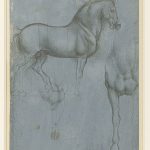
These are just a few examples of Leonardo da Vinci’s watercolor drawings. His mastery of this medium is evident in the delicate, subtle, and realistic way he captured the natural world. His watercolor drawings are a testament to his genius as a scientist, engineer, and artist.
Techniques and Innovations in Leonardo’s Watercolors
Leonardo da Vinci’s watercolor techniques were marked by their experimentation and innovation. He embraced the translucent qualities of the medium, using layers of delicate washes to create depth and luminosity. His innovative layering technique allowed him to achieve a rich interplay of colors and intricate textures, captivating viewers with his ability to convey nuanced tones and subtle transitions.
Beyond traditional watercolor application, Leonardo introduced unconventional tools such as sponge and cloth to manipulate the medium. He leveraged these tools to simulate natural textures, enabling him to capture the tactile qualities of surfaces ranging from skin to stone. This innovative approach transcended the boundaries of traditional watercolor art, establishing a new dimension of realism and tactile representation.
Themes and Subjects in Leonardo’s Works
Leonardo da Vinci’s works encompassed a diverse range of themes and subjects, mirroring his insatiable curiosity. His exploration of anatomy led to detailed studies of the human body, unveiling insights into physiology that were groundbreaking for his time. Additionally, his affinity for nature manifested in studies of plants, birds, and landscapes, capturing the beauty and intricacies of the natural world.
Art and science converged in Leonardo’s works, as he dissected not only physical forms but also light, shadow, and perspective. His architectural sketches showcased his visionary approach to design, while his portraiture delved into the nuances of human expression. Through his few watercolors, Leonardo illuminated the interconnectedness of diverse subjects, inspiring generations of artists and scholars to explore the multifaceted tapestry of the world around them.
Influence of Leonardo da Vinci on Art
Leonardo da Vinci’s innovative techniques left an indelible mark on the world of art, inspiring generations of artists and catalyzing new artistic movements. His mastery of layering and texture manipulation paved the way for the development of realism and naturalism in painting. Artists such as Albrecht Dürer drew inspiration from Leonardo’s watercolor studies of anatomy and nature, infusing their own works with heightened precision and attention to detail. The Renaissance art movement itself was shaped by Leonardo’s holistic approach to merging art and science, laying the foundation for the period’s emphasis on intellectual exploration and anatomical accuracy.
Preservation and Legacy of Leonardo’s Watercolors
Preserving watercolor artworks presents unique challenges due to the medium’s delicate nature and susceptibility to fading over time. Leonardo’s works, housed in prestigious institutions, have been meticulously conserved to safeguard their authenticity and vibrancy. Their legacy continues to thrive in the contemporary art world, serving as a source of inspiration for artists seeking to explore the interplay between artistic expression and scientific inquiry. Their enduring significance lies in their ability to bridge the gap between art and knowledge, underscoring Leonardo’s profound influence on the evolution of creative disciplines.
FAQs about Leonardo da Vinci’s Watercolors
Q1: Were Leonardo’s watercolors primarily studies or finished artworks?
A: Leonardo’s watercolors served both purposes, often starting as observational studies that later influenced his paintings.
Q2: How did Leonardo achieve such intricate textures in his watercolors?
A: He used innovative techniques like layering, sponge application, and cloth manipulation to capture lifelike textures.
Q3: Did Leonardo’s watercolors include landscape scenes?
A: Yes, he explored landscapes, depicting serene natural vistas with his characteristic attention to detail.
Q4: What impact did Leonardo’s watercolor studies of anatomy have on medical illustration?
A: His accurate anatomical renderings advanced medical understanding and set new standards for anatomical illustration.
Q5: Can Leonardo’s watercolor techniques still be seen in modern art?
A: Absolutely, his methods influence contemporary artists who blend traditional techniques with modern concepts.
Q6: Did Leonardo’s watercolors gain recognition during his lifetime?
A: While not widely recognized in his time, his watercolor works contributed to his reputation as a Renaissance polymath.
Q7: How do Leonardo’s watercolors showcase his scientific curiosity?
A: His meticulous observations of nature and anatomy exemplify his fusion of artistic creativity and scientific investigation.
Q8: Are there any lost watercolor works by Leonardo?
A: Some of his watercolors have been lost to time, but surviving works continue to inspire and captivate.
Q9: What institutions house Leonardo’s notable collections?
A: The National Gallery, The Metropolitan Museum of Art, and The Louvre Museum showcase his remarkable watercolor pieces.
Q10: How do Leonardo’s watercolors impact the perception of art as a whole?
A: His watercolors transcend artistic boundaries, inspiring a broader understanding of how art and science intertwine.
